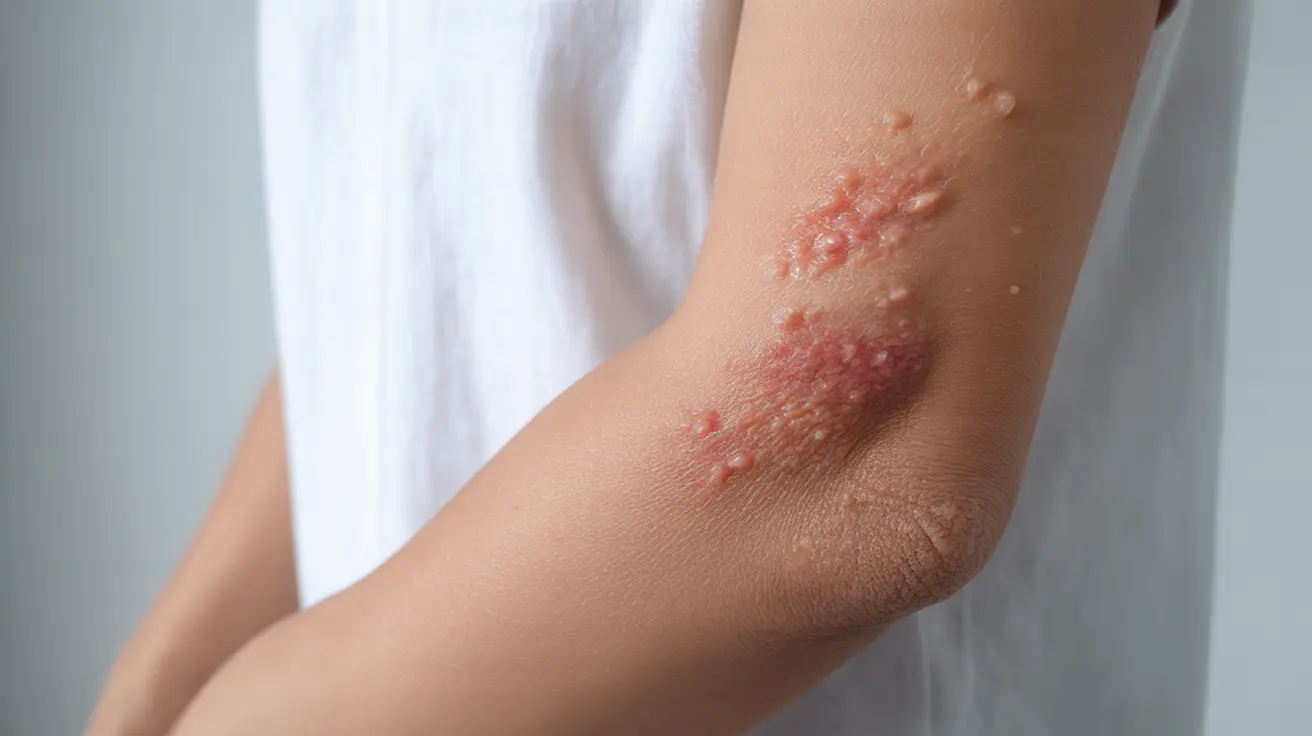Shingles scabs represent the final healing stage of a shingles outbreak, occurring when blisters dry up and form protective crusts over healing skin. Understanding how to properly care for shingles scabs is crucial for preventing complications and promoting optimal healing. This comprehensive guide will help you navigate the scabbing phase of shingles effectively.
The Shingles Scabbing Process
When shingles blisters begin to dry out, they naturally form scabs as part of the body's healing mechanism. This typically occurs about 7-10 days after the initial rash appears. The scabbing process indicates that your body is actively working to repair the affected skin tissue, though it's important to monitor this phase carefully to ensure proper healing.
Proper Care During the Scabbing Phase
Taking proper care of shingles scabs is essential for preventing scarring and reducing the risk of bacterial infection. Here are key steps to follow:
- Keep the affected area clean and dry
- Avoid scratching or picking at scabs
- Wear loose-fitting, soft clothing
- Apply prescribed or recommended treatments as directed
- Protect the area from direct sunlight
Managing Discomfort and Pain
During the scabbing phase, many people experience continued discomfort, including itching and pain. Several approaches can help manage these symptoms:
Natural Relief Methods
Several home-based treatments can provide comfort during the healing process:
- Cool compresses
- Calamine lotion
- Colloidal oatmeal baths
- Gentle moisturizing
- Air circulation around the affected area
Medical Interventions
Your healthcare provider may recommend specific treatments to manage pain and promote healing:
- Prescribed antivirals
- Pain medication
- Medicated creams or ointments
- Antihistamines for itch relief
Prevention of Complications
While shingles scabs are healing, it's crucial to prevent complications through proper care and monitoring. Watch for signs of infection such as increased redness, warmth, swelling, or unusual discharge. Maintaining good hygiene and following medical advice can significantly reduce the risk of complications.
Frequently Asked Questions
How long do shingles scabs usually take to heal completely?
Shingles scabs typically take 2-4 weeks to heal completely after they form. However, the exact healing time can vary depending on factors such as age, immune system health, and proper care of the affected area.
What should I avoid doing when my shingles rash is scabbing over?
Avoid scratching or picking at the scabs, applying harsh chemicals or hot water to the area, wearing tight clothing that could irritate the scabs, and exposing the area to direct sunlight. Also, refrain from using adhesive bandages that might pull off scabs when removed.
What are the best home remedies or treatments to relieve itching and pain from shingles scabs?
Effective home remedies include cool compresses, calamine lotion, colloidal oatmeal baths, and wearing loose, breathable clothing. Over-the-counter pain relievers and antihistamines can also help manage discomfort and itching. Always consult your healthcare provider before starting any treatment.
Can shingles scabs still spread the virus to others, and when is it safe to be around people?
The virus can still spread until all scabs have completely fallen off naturally. You're considered contagious until every lesion has crusted over and all scabs have fallen off. Avoid close contact with high-risk individuals (pregnant women, newborns, and immunocompromised people) during this time.
When should I see a doctor if my shingles scabs are not healing or if pain persists after healing?
Consult a doctor if scabs haven't healed within 4 weeks, if you notice signs of infection (increased redness, warmth, swelling, or discharge), or if you experience severe pain that persists after the scabs heal. This could indicate post-herpetic neuralgia or other complications requiring medical attention.




